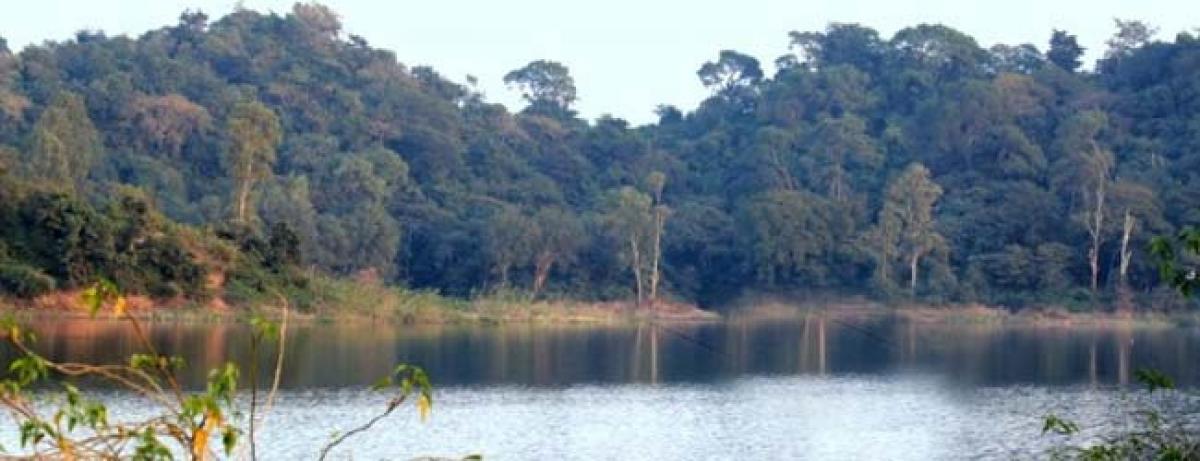Live
- TTD EO visits Sringeri Sarada Peetham
- Automobile loading using NMG rakes commences
- 555th Prakash Purab celebrated with gaiety
- Good news for Atmakur farmers
- High-risk aortic valve replacement surgery performed successfully
- HMWSSB MD holds review meeting on OTS-2024 scheme
- Dhobi Ghat assessed for potential to host sports complex
- SCR bets on LHB train coaches for safety
- SVU felicitates best teachers
- Tata Group to market Araku coffee
Just In
Population of golden mahseer hunted for sport, food declining in Himachal rivers


The population of the golden mahseer, hunted for sport and food, is declining in rivers of Himachal Pradesh, prompting the fisheries department to begin an artificial propagation programme for its rehabilitation and conservation.
Shimla: The population of the golden mahseer, hunted for sport and food, is declining in rivers of Himachal Pradesh, prompting the fisheries department to begin an artificial propagation programme for its rehabilitation and conservation.
A hatchery with an outlay of Rs.6 crore ($900,000) has been set up at Machhial near Jogindernagar town in Mandi district to rear the mahseer, also known as the tiger of Indian rivers, to breed the fish and release its fingerlings into the wild.
"The first breeding is likely to come up in July and August this year and it will be a major breakthrough in evolving the breeding technology of the golden mahseer," fisheries director Gurcharan Singh told IANS.
He said hatchery-reared juveniles would be released into the rivers and reservoirs.
The brooder fish reared in the hatchery was collected from the local rivers and streams.
Fish biologist S.N. Ogale is assisting the department in developing methods of the mahseer's artificial propagation and hatchery management.
Being a game fish, the mahseer is also an angler's delight.
Studies conducted by the fisheries department say the population of the golden mahseer is declining in the state due to various reasons, including construction of dams, barrages, pollution, indiscriminate fishing of brood and juvenile fish, introduction of exotic species and habitat deterioration.
It has been declared endangered by the Washington-based International Union of Conservation of Natural Resources.
The mahseer, the longest-living freshwater fish, is native to mountain and sub-mountain regions. It belongs to the genus Tor.
The Pong Dam reservoir, around 250 km from state capital Shimla and 190 km from Chandigarh, supports an ample population of the golden mahseer.
It migrates upstream for spawning during the southwest floods. After spawning, it returns to the original feeding grounds. It is available at altitudes of up to 2,000 metres above sea level and is purely carnivorous.
Officials said once the state developed mahseer breeding technology, the next step would be ranching, a milestone in aquaculture.
The wild fish stocks will be increased manifold by releasing hatchery-reared juveniles that will be later harvested when they grow up to table size, said an official.
Himachal Pradesh is aptly called a storehouse of aquatic biodiversity. The state's water bodies are home to 85 fish species, including rohu, catla and mrigal and trout, both brown and rainbow.
The fisheries department says the overall fish production in the state has increased by 9.2 percent in the last fiscal.
A total of 11,798 tonnes of fish valued at Rs.109.80 crore was harvested from the state rivers and reservoirs in 2015-16 - 1,062 tonnes higher than the previous year.
Of this, trout constituted 417.23 tonnes - 61.03 tonnes higher than the previous year.
Meanwhile, a "cage fish culture" project has been introduced on a pilot basis by installing four cages each in the Gobind Sagar and Pong reservoirs for rearing the high-yielding Pangasius Sutchi species of shark catfish that aims to annually rear two tonnes per cage.

© 2024 Hyderabad Media House Limited/The Hans India. All rights reserved. Powered by hocalwire.com






